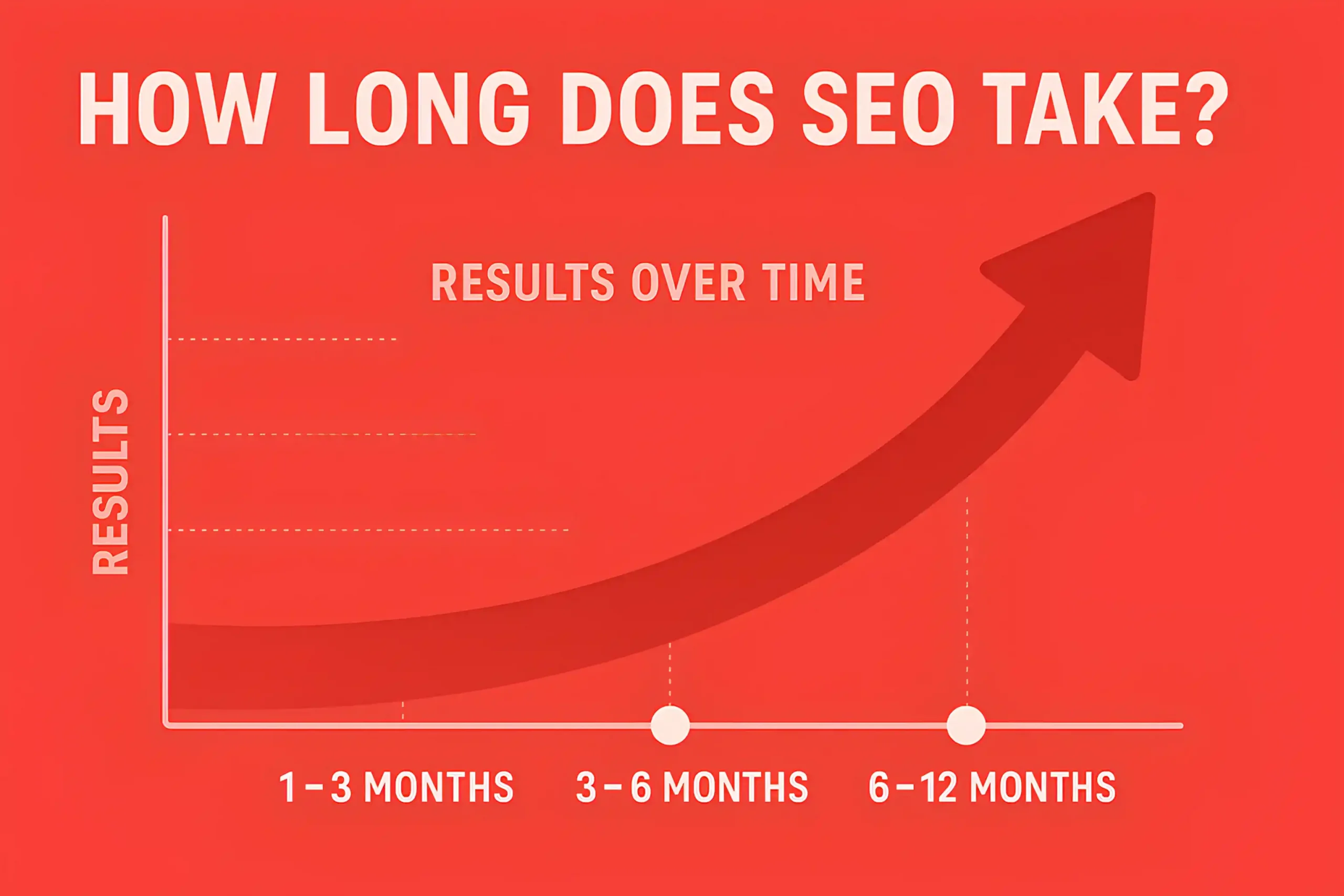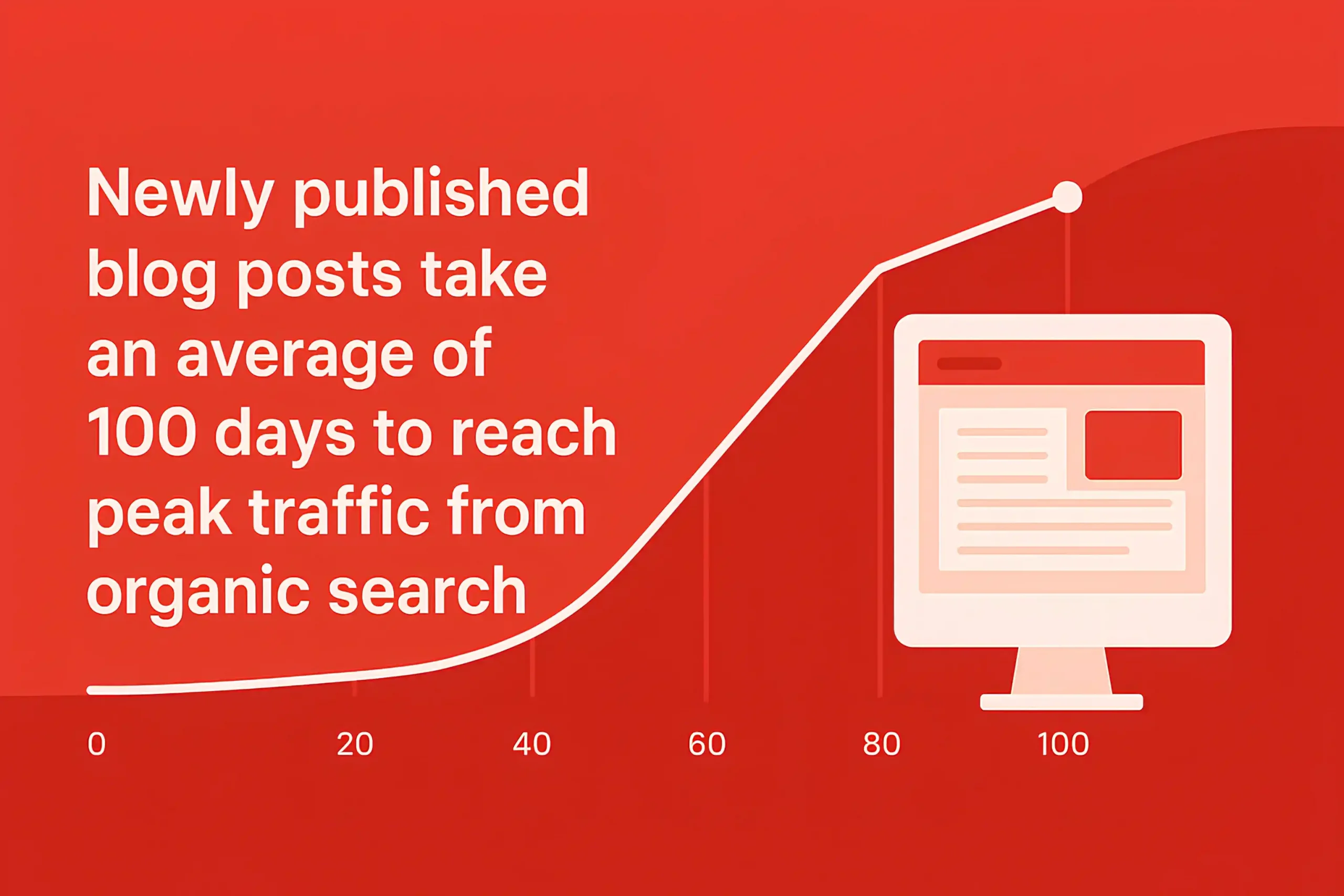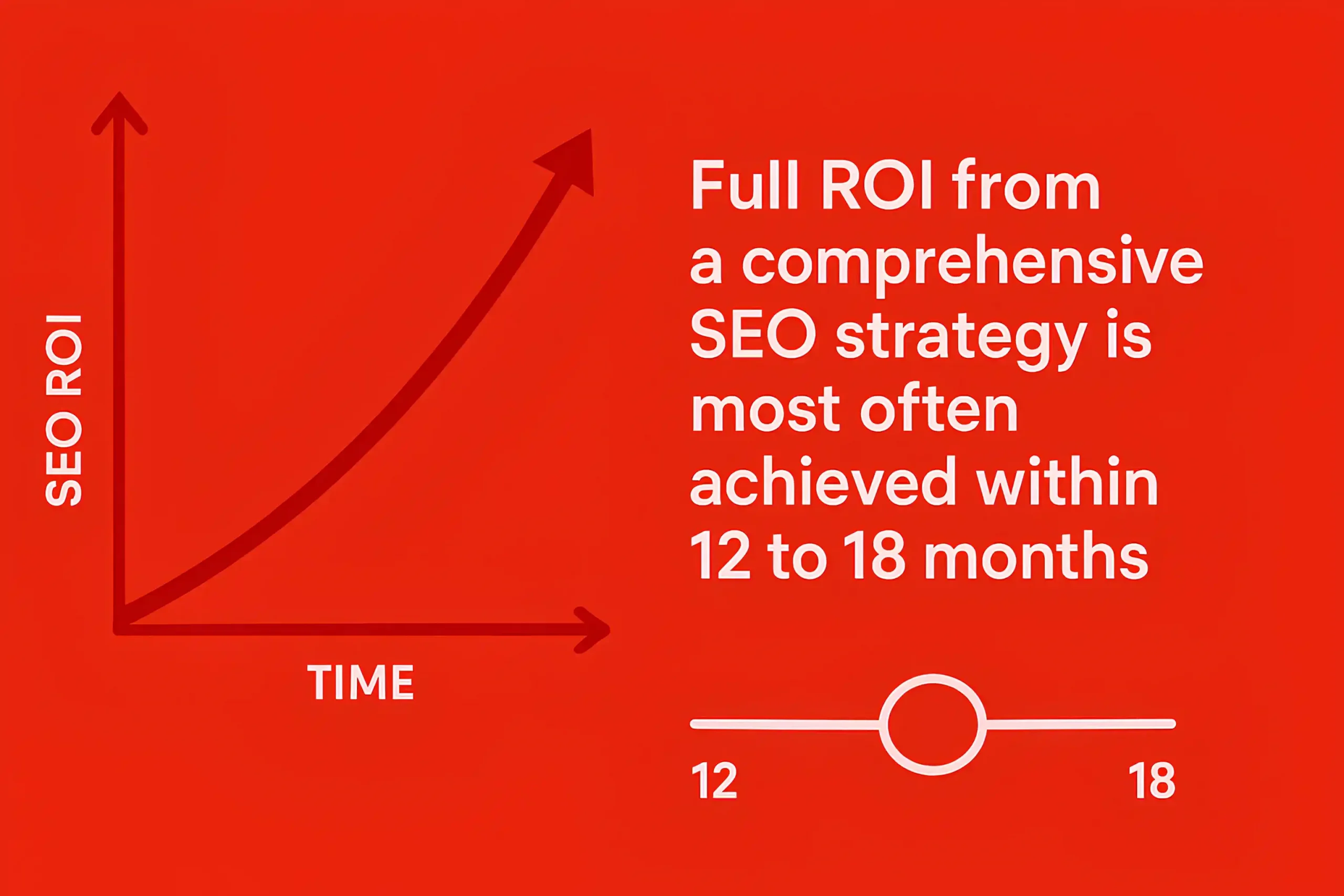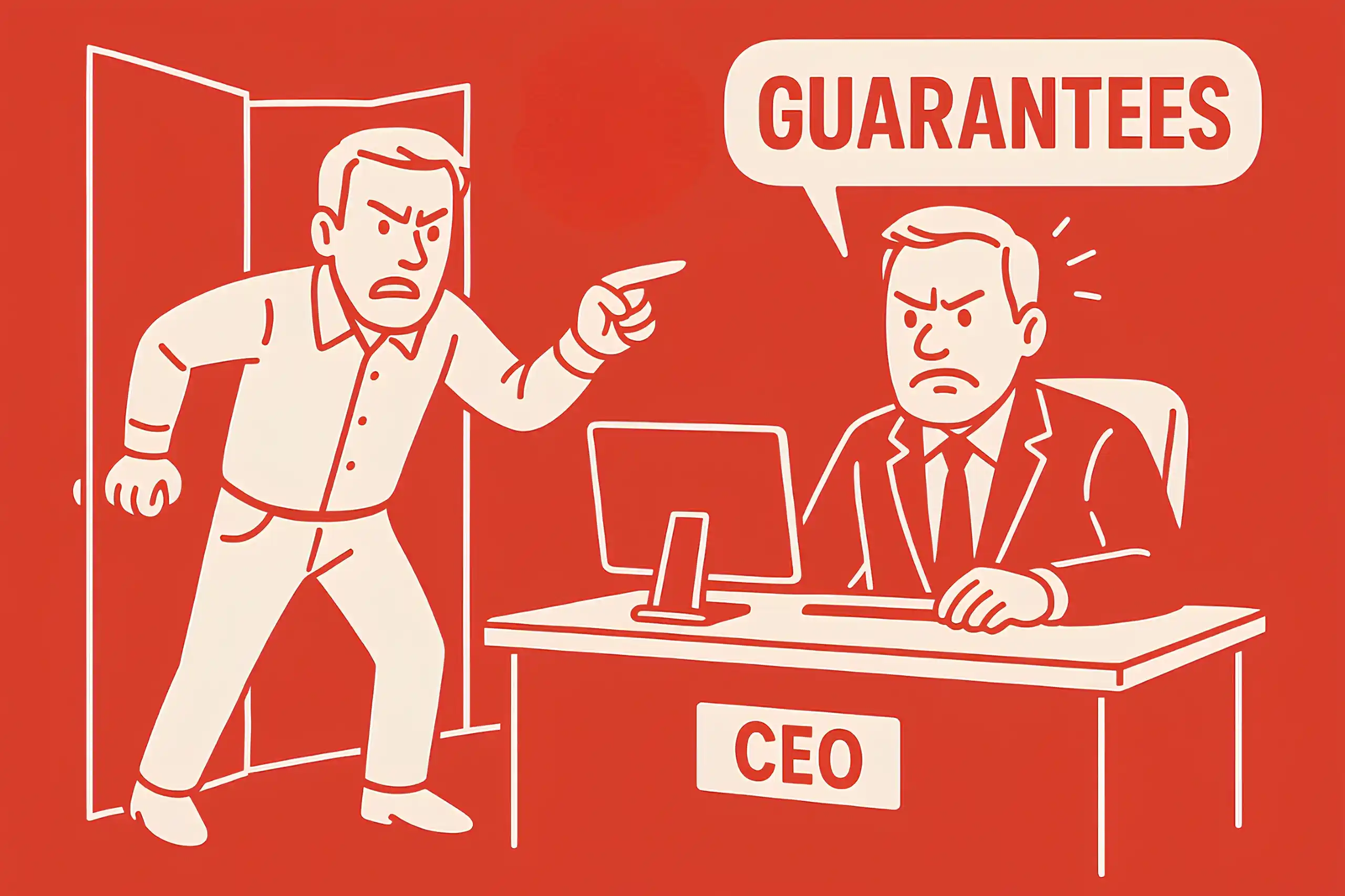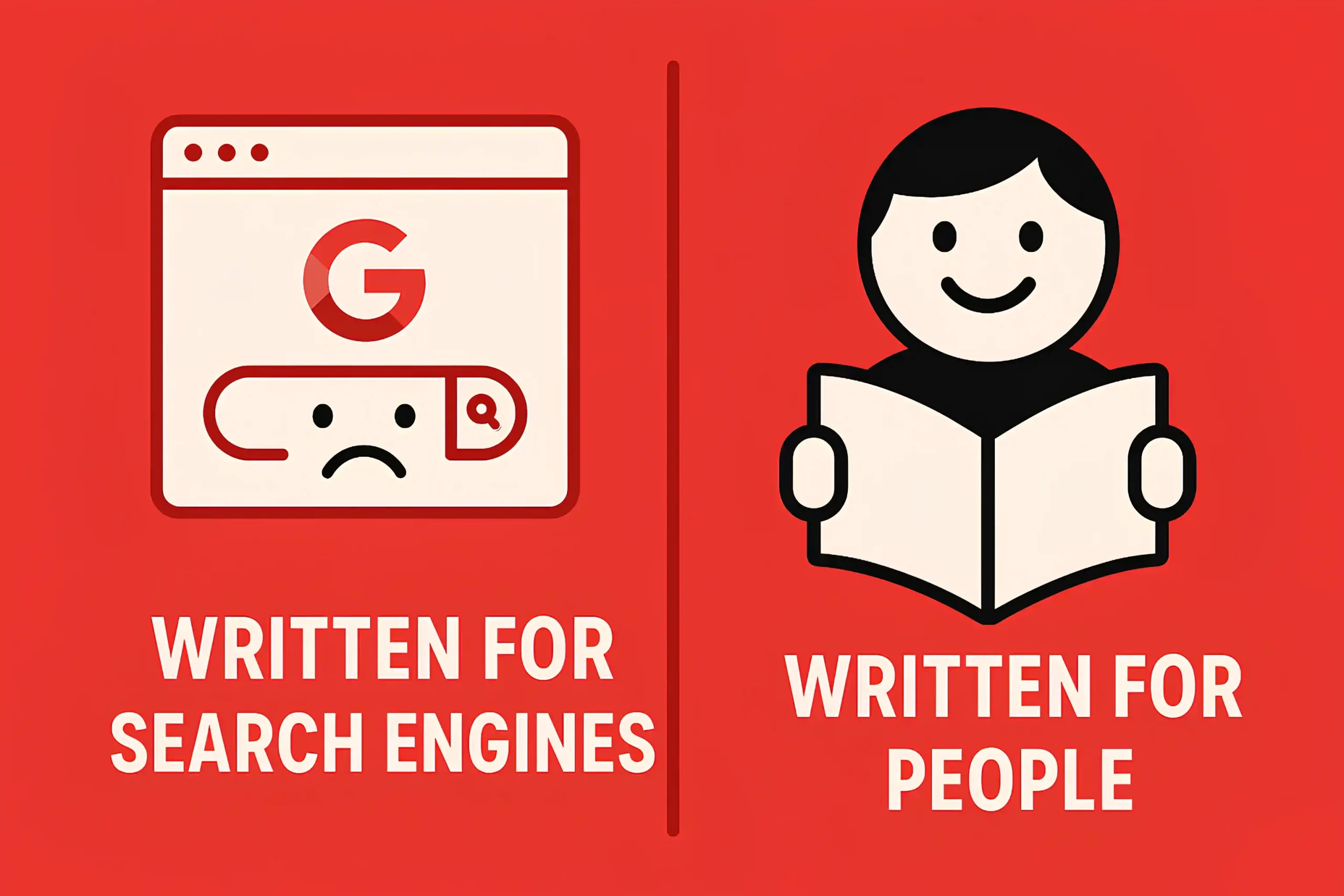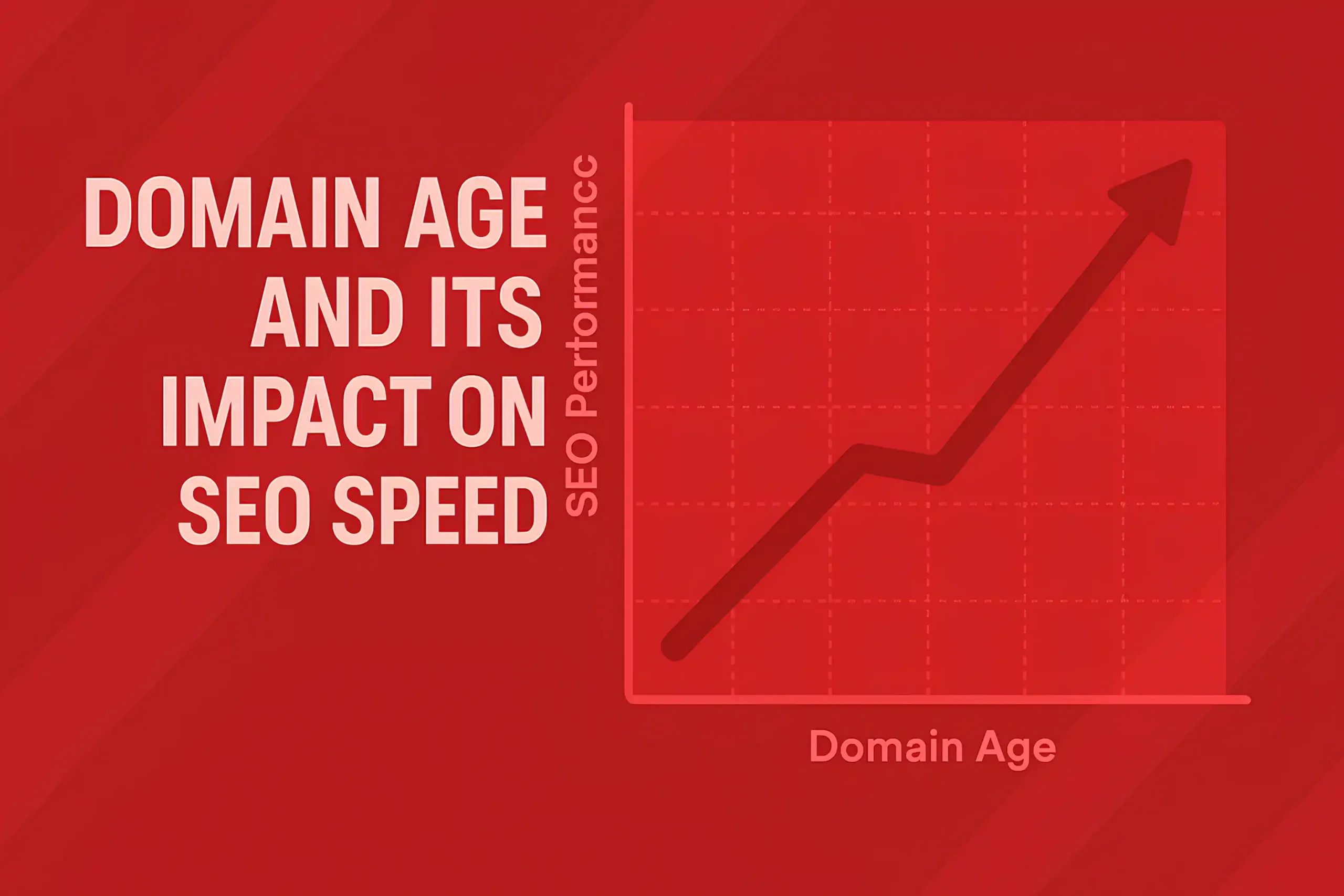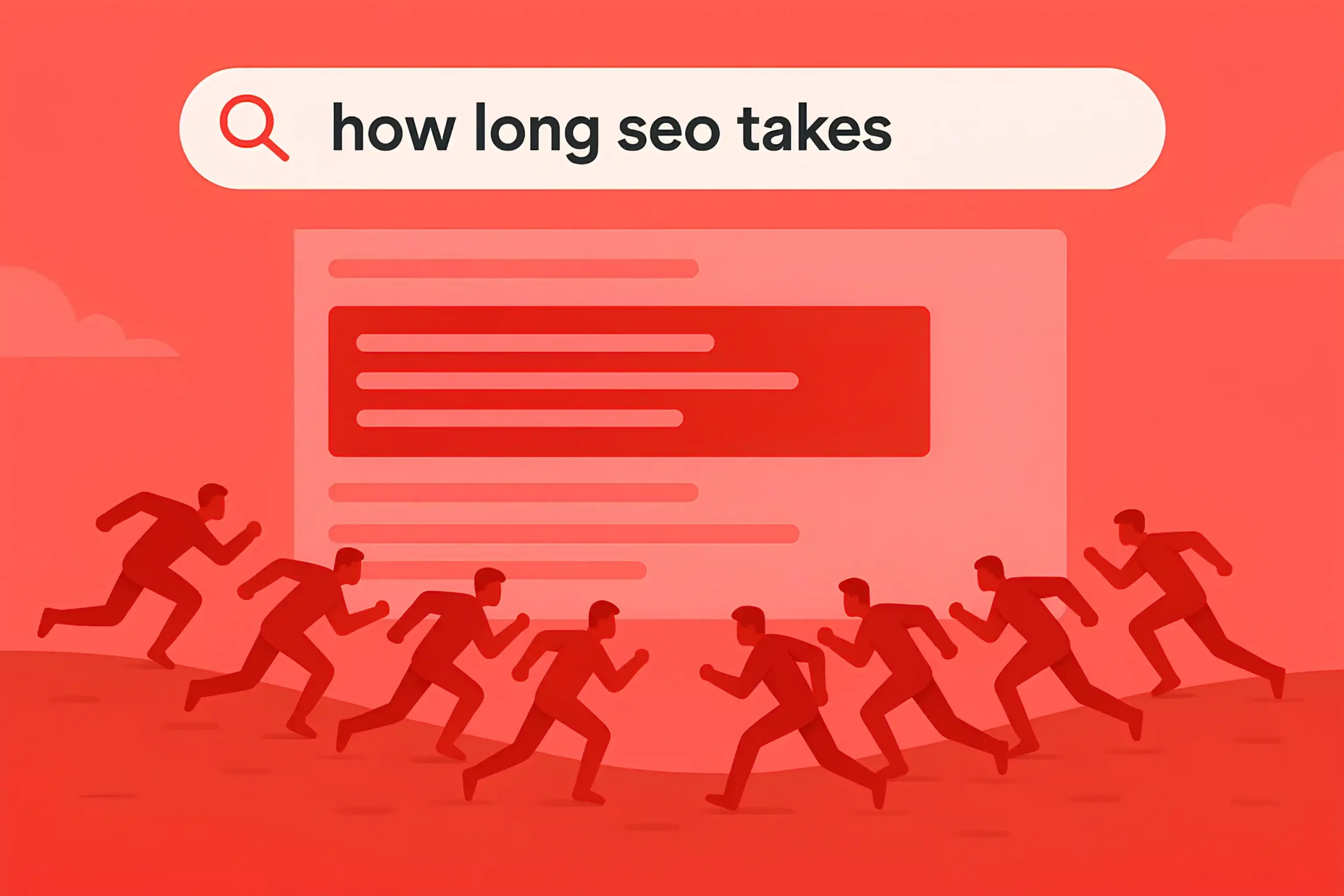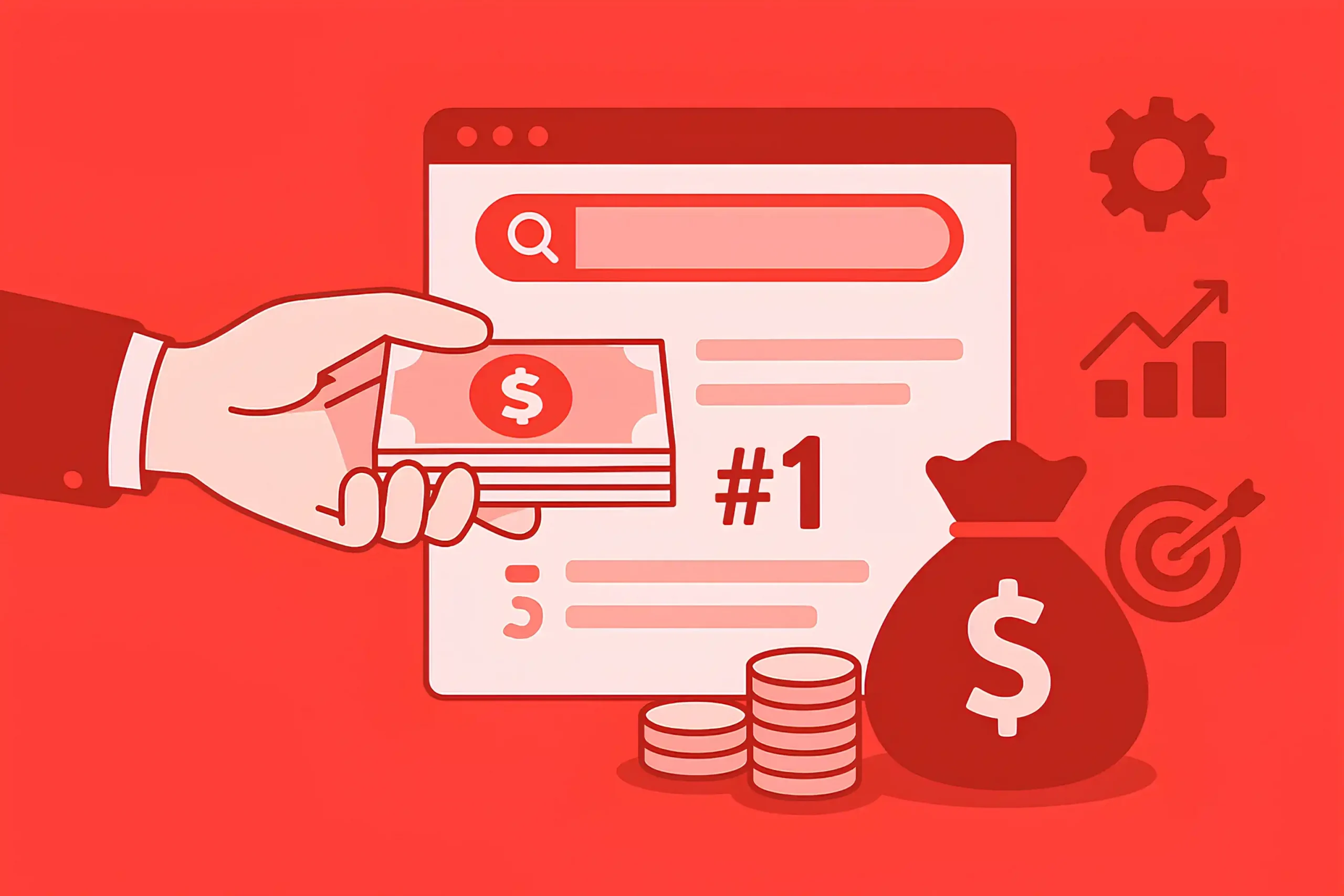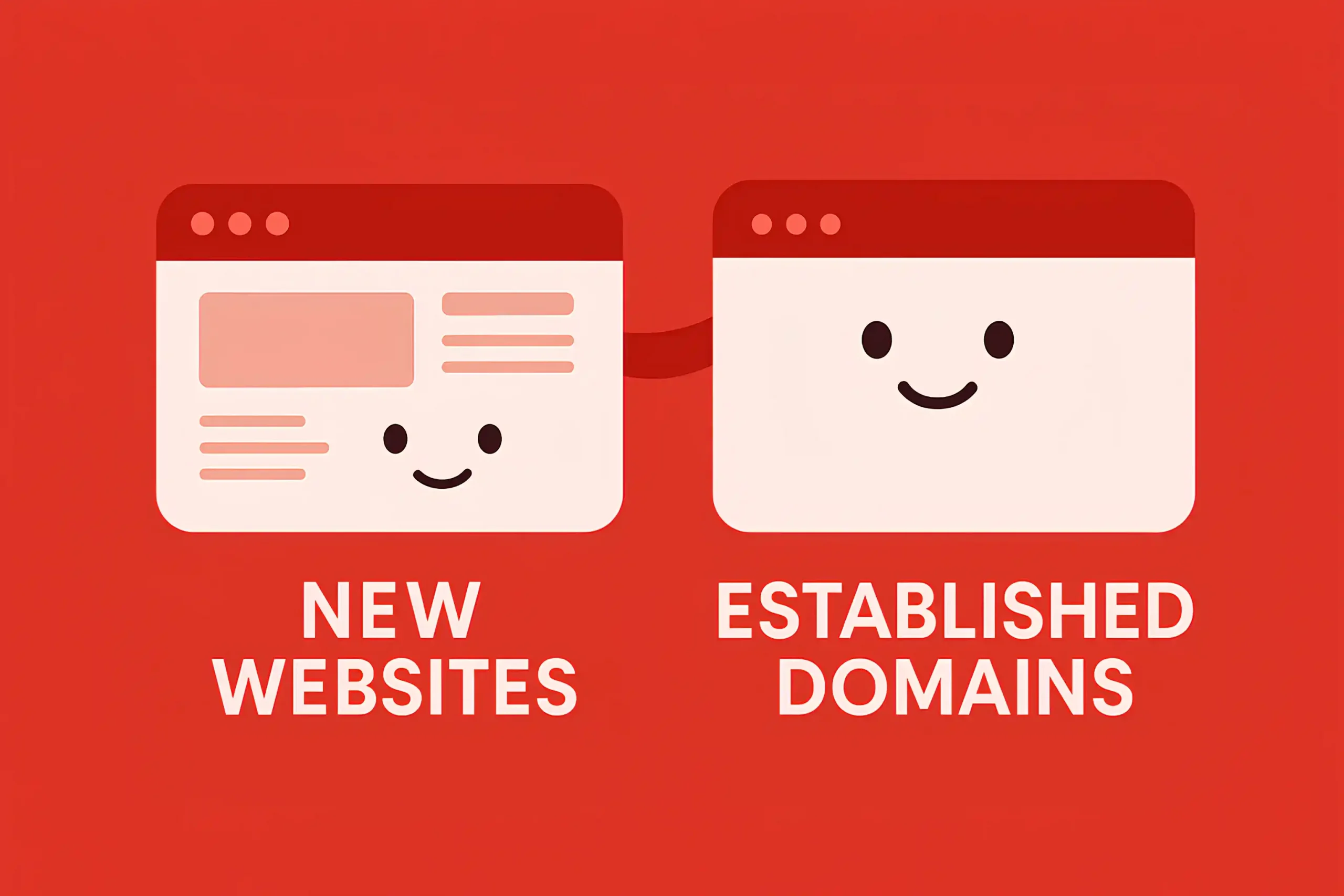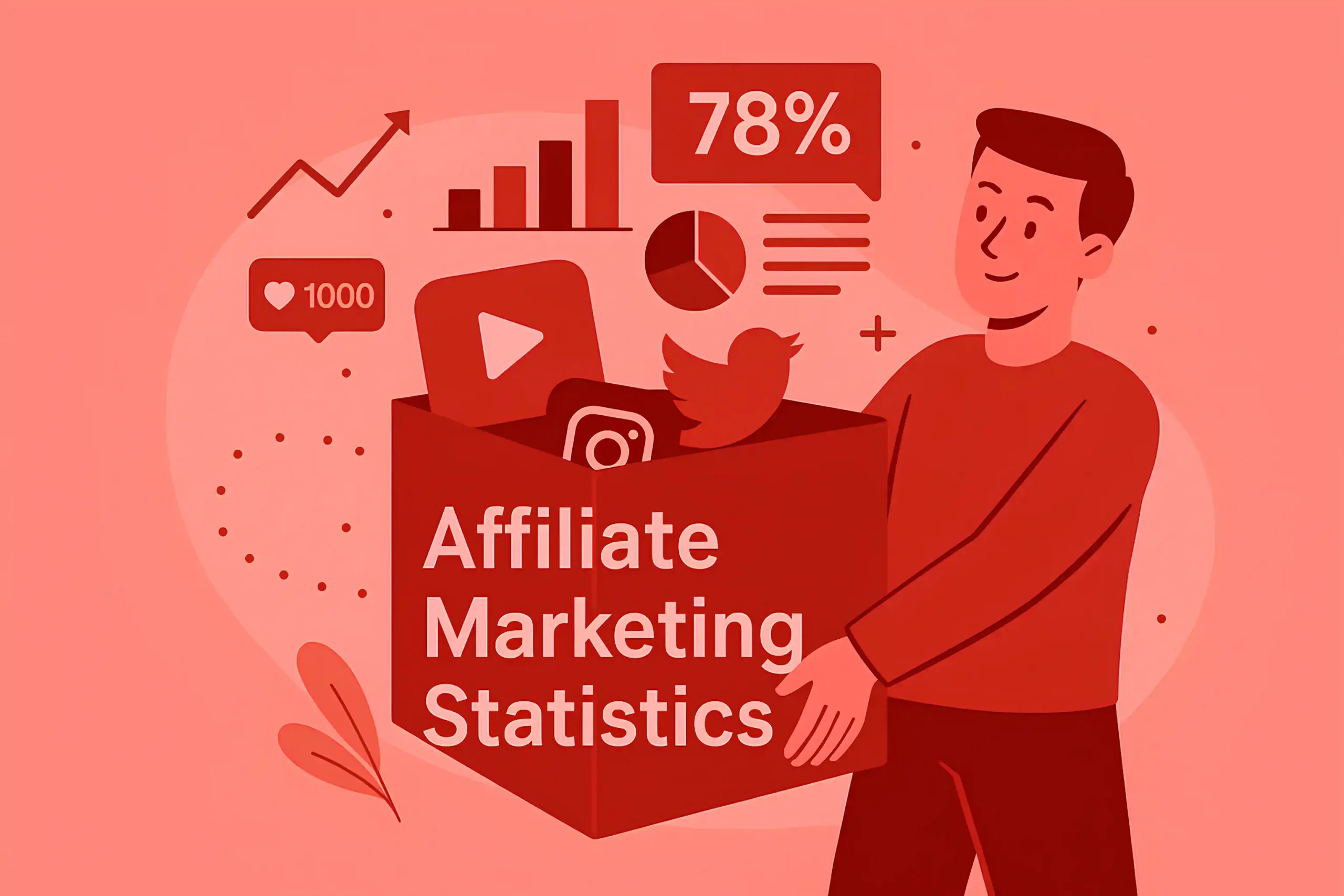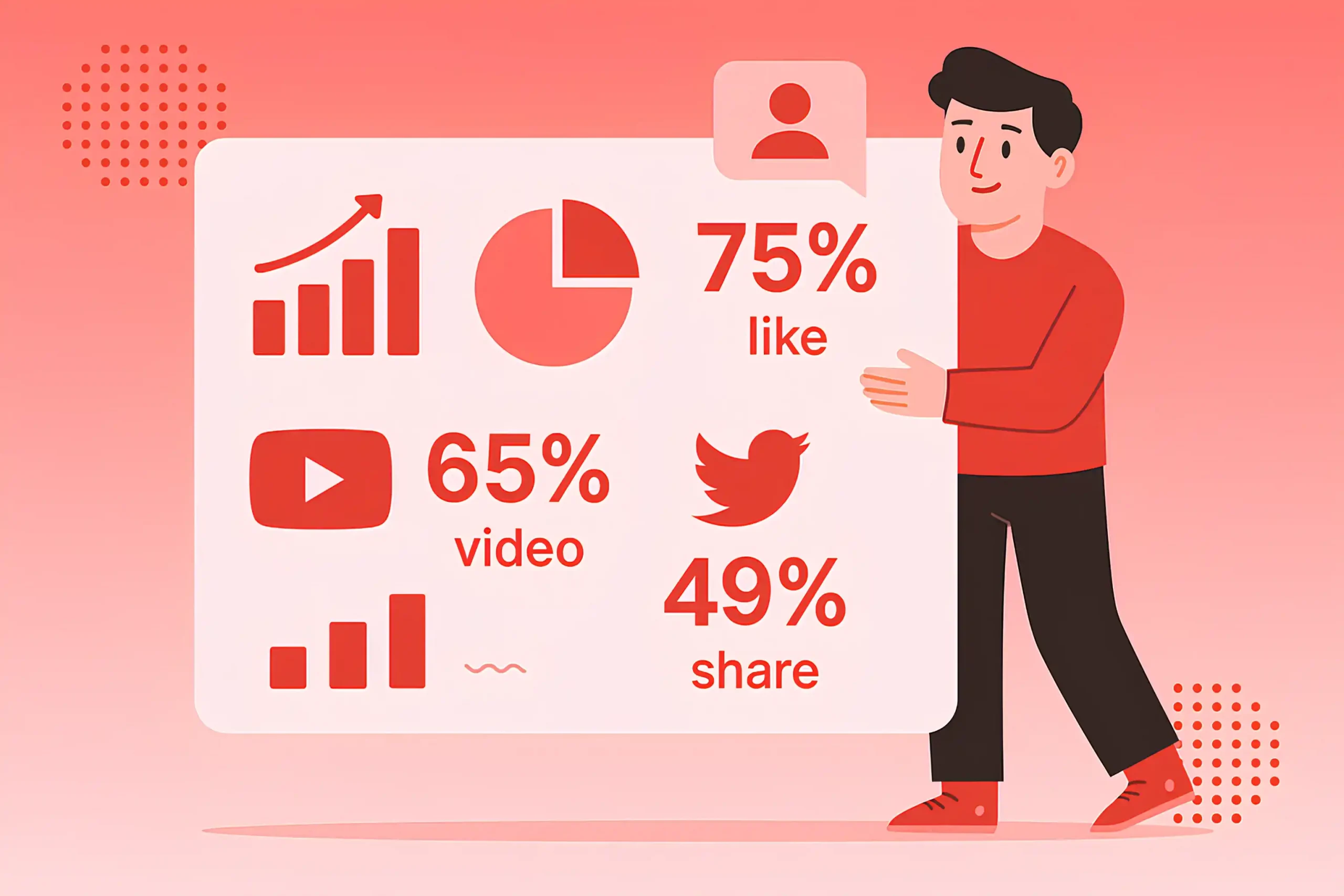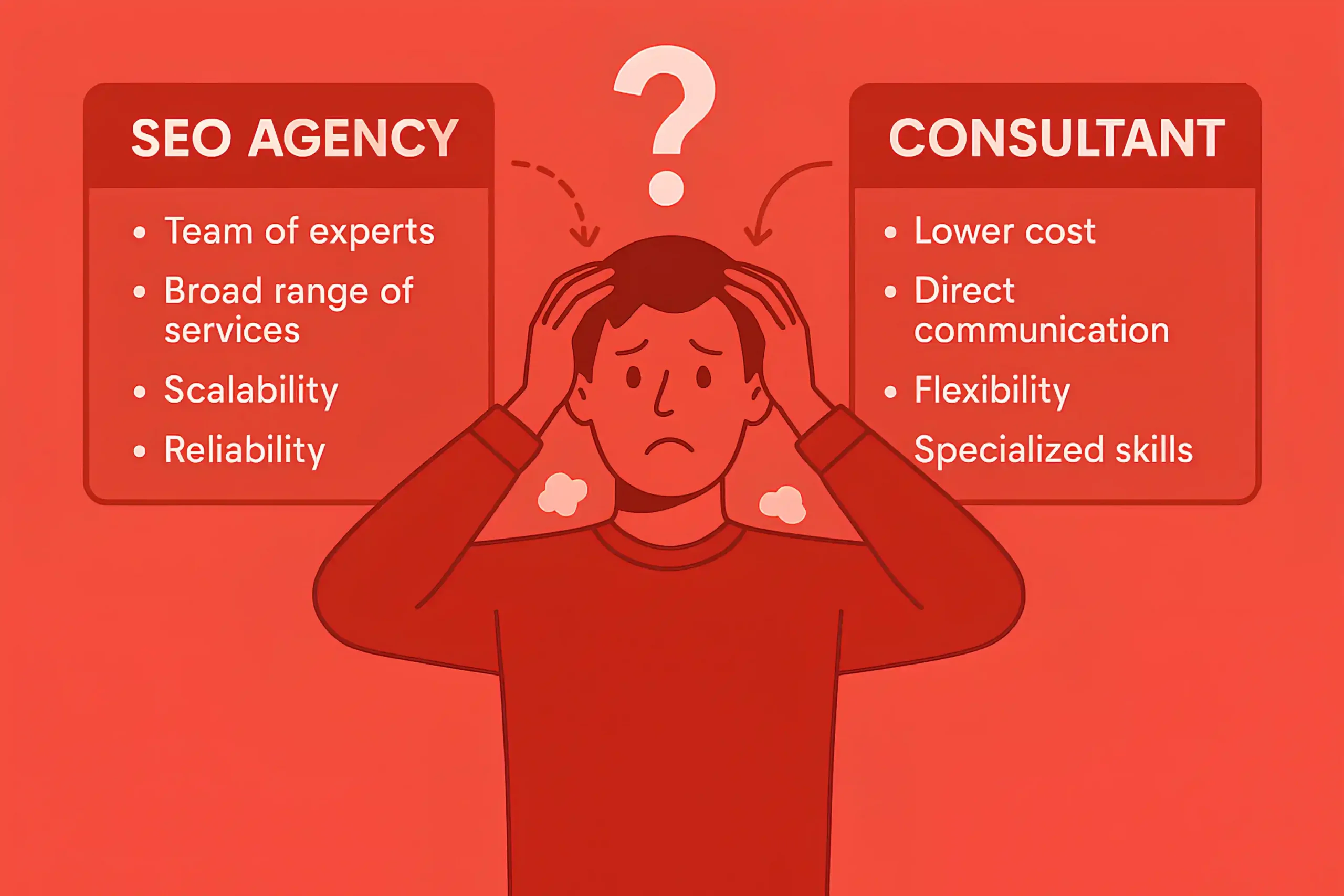In the last years, we’ve been running dozens of SEO campaigns, and believe me, our team never complained about being overloaded with work or when faced with challenges that seemed unsolvable. It’s a few times harder to explain to clients (especially the ones that have no clue about SEO) that SEO takes time.
I know you’re all investing money and time in SEO (and not only), and of course every minute counts, but before making your first step, it’s better to understand the basics of how long SEO takes on average, what to expect, what factors affect the overall duration, and why you can’t outrank your 10-year-old competitor with $500 a month.
Ready? Let’s get started.
Common Misconceptions About SEO Speed
The biggest myth I see is the “promise me a rank” request. At NEWMEDIA.COM and in my inbox, a lot of briefs start with one target keyword and a deadline. Honestly, such framing sets everyone up for disappointment.
A single query lives inside a moving SERP with multiple intents, ads, news, map packs, short videos, and constant testing. You don’t control competitors’ releases, Google’s experiments, or how users behave after they click.
Sometimes, even when you appear on the first page fast, volatility in the first few months is normal because systems test new URLs, compare them to close matches, and reshuffle.
Performance-based deals add another point of confusion. If the contract pays only when a position goal is met by a date, the incentives drift toward easy wins that don’t move revenue, brand terms that would rank anyway, or unclear queries with thin intent.
I’ve seen folks celebrate a fast jump for a term that sends the wrong traffic and kills the conversion rate. Meanwhile, the work that impacts the long-term is the first thing cut because it “won’t pay out this month.”
Another common belief is that “content velocity equals fast ranking.” However, believe me, publishing more URLs in a short period can speed up discovery, but discovery is not the result.
If those pages sit on weak internal paths, duplicate intent, or cover topics the site has no right to rank for, you inflate the index with noise.
Remember, Google reacts to the whole site. Crawl budget, perceived site quality, and engagement patterns all act like governors. I’ve taken over sites that crafted 100 posts in 30 days, then stalled for months because the structure and quality signals could not support that pace.
But that’s not it. For example, many site owners believe that a handful of high-DR links can suddenly improve the rankings, or assume that technical fixes equal instant wins.
Then there is the “agency magic” story. Some sellers promise guaranteed SEO services like a 60-day turnaround, then disappear after low-value activity.
In reality, the red flags were visible on day one. Guarantees tied to positions instead of outcomes, no ownership of analytics access, no plan for what stops working after the contract ends, and a to-do list that lives only in slides.
Pro tip: High speed has receipts: crawl logs, content maps, internal link optimization, clear KPIs and SEO goals, and hypotheses tied to user behavior. If you can’t see the work, you are the product.
People also underestimate seasonal and intent dynamics. Some queries are event-driven and reward recency. Others favor deep evergreen resources with behavioral history. In YMYL topics like healthcare SEO, trust takes longer because systems tend to be conservative and require stronger proof.
There’s also a myth that speed comes from “doing everything at once.” But launching a redesign, a content movement, and a redirect plan in the same week makes attribution impossible and has risks.
I think real speed comes from sequencing high-leverage moves in a stable order.
SEO Timeframes Backed by Data
On average, websites begin to see measurable SEO improvements within 3 to 4 months of consistent optimization.
Reaching the first page of Google for competitive keywords typically takes 6 to 12 months.
About 68% of websites that invested in technical SEO saw indexation improvements within the first 90 days.
Newly published blog posts take an average of 100 days to reach peak traffic from organic search.
Websites with fewer than 100 backlinks take roughly 6 months longer to achieve first-page rankings compared to those with stronger link profiles.
Local SEO efforts, like optimizing Google Business Profiles, often show results within 4 to 8 weeks.
Full SEO ROI from a comprehensive SEO strategy is most often achieved within 12 to 18 months.
Content refreshes lead to ranking boosts within 30 to 60 days in most industries.
High-authority domains can cut ranking timeframes by nearly 40% compared to low-authority sites.
SEO campaigns targeting long-tail keywords see traction twice as fast as those targeting high-volume head terms.
Websites with strong internal linking typically cut their time to rank by 20–25%.
Technical fixes like improving site speed can deliver noticeable ranking lifts in as little as 4 weeks.
Sites publishing 4+ blogs per month reach organic traffic milestones 30% faster than those publishing less frequently.
Competitive industries like SaaS SEO or finance may take 2 years or more to reach stable top-3 positions.
Around 80% of SEO professionals agree that consistent results require at least 6 months of ongoing work before a campaign is considered successful.
Average Time to Rank Based on My Experience
Our team has been running SEO campaigns for many years now across different business models, from SaaS and e-commerce to enterprise and local businesses. What I’ve consistently seen is that timelines are never one-size-fits-all, even though clients often want clear guarantees.
Based on my experience, when you’re working in low-competition industries and you start building a proper foundation, it usually takes at least six months before you start noticing tangible results.
That doesn’t mean zero progress before that point: indexing, impressions, and small keyword movements may appear earlier, but real business impact typically doesn’t appear until you’ve crossed that half-year mark.
In contrast, highly competitive or sensitive industries demand a much longer horizon. If you’re in legal, finance SEO, healthcare, SaaS, or other saturated verticals, I’ve found it usually takes closer to a year or more to break into meaningful positions.
Don’t get me wrong, even with bigger budgets, it’s not as simple as buying your way into authority. Money accelerates production, but if deliverables from content, dev, or design teams move slowly, the entire timeline stalls.
I’ve had campaigns delayed for months simply because content approvals were slowed down or technical fixes were stuck in the queue. Smooth collaboration with the client’s team matters as much as the SEO strategy itself.
Another nuance many people overlook is the delayed impact of SEO work. I’ve seen sites where we worked consistently for six to twelve months, then paused for various reasons.
Then, strangely, three to six months later, results started kicking in stronger than they ever did during the active campaign. Sometimes Google needs time to reassess authority, recrawl the website, and reward the groundwork that was already done.
So if you want the honest answer from me, it’s this: expect six months minimum in lower-competition markets, closer to a year in tougher ones, and understand that even the best strategy isn’t a guarantee of linear growth.
Time to First Page for Low vs. High Competition Keywords
Instead of providing a direct answer, let me go deep. Logically, everyone assumes low competition keywords are easier to rank for, and that assumption is mostly correct. But in practice, the time it takes to reach the first page depends on much more than keyword difficulty scores. Search engines don’t isolate a single query and make a decision based only on one page optimization.
They weigh your overall website health, topical authority, and industry credibility. That means even if a keyword looks “easy” on paper, a site with poor authority or a weak topical foundation may struggle to move, while another site with strong authority can sometimes break into high-difficulty spaces faster than expected.
One factor I’ve seen repeatedly is the role of topical authority. If you consistently cover a subject in-depth and become a recognized resource in that niche, you can often outrank competitors with higher authority but weaker topical coverage.
It’s also important to question what we mean by “low” and “high” difficulty. Tools like Ahrefs or SEMrush assign keyword difficulty scores largely based on backlinks to the top-ranking pages.
Yeah, they’re useful as a directional metric, but they don’t capture the full picture. If you manually review the first page of results and see thin coverage, outdated content, or clear gaps in what users expect, the keyword may be easier than the score suggests.
On the other hand, if the SERP is dominated by entrenched brands with strong authority and intent-perfect content, it will take far longer than the tools imply.
From my own campaigns, I can give you some averages. For really low competition keywords, where the SERP has weaknesses and the site has a decent foundation, I’ve seen first-page results within three to four months.
Sometimes it happens faster if the content is high-quality and well-integrated into the site’s topical map. For higher competition keywords, especially in industries like SaaS, healthcare, legal, or finance, it’s a much longer road. On average, you’re looking at one to two years of sustained effort: content, links, technical refinement, and consistent topical expansion, before you reliably hold a first-page position.
Factors That Control SEO Timelines
Over the years, I’ve seen that no two SEO campaigns follow the same path. The timeline isn’t dictated by a single factor like keyword difficulty or budget; it’s a combination of moving parts that work together, sometimes in harmony and sometimes against each other.
From client-side delays to algorithm updates, from technical debt to content production bottlenecks, every campaign carries its own rhythm.
In this section, I’ll share the factors I’ve personally observed shaping timelines across different industries and business models, with real cases and lessons learned along the way. Keep reading, the details may surprise you.
Website Authority and Trust Signals
From my experience, one of the strongest forces behind SEO timelines is the level of authority and trust a website has across the internet. Traditionally, backlinks have carried the biggest weight, often making up over 60% of the equation when it comes to rankings.
Of course, a good backlink profile accelerates results. But the reality is that authority today goes far beyond backlinks. Brand mentions, local citations, industry directories, and even nofollow links all play a role in shaping how search engines and users perceive your site.
Let’s not forget that reputation signals like customer reviews, third-party references, and consistent brand visibility feed into the broader trust picture that influences how quickly your content gets attention.
When I talk about authority, I don’t mean “Domain Authority” scores that are easy to game or manipulate. I mean the real authority that comes from being present, referenced, and recognized across your niche.
Interestingly, this shift is even more visible in large language models like ChatGPT or Perplexity. Unlike Google’s algorithms, which still weigh backlinks heavily, LLMs respond much faster to signals of reputation, content structure, and coverage depth.
They don’t rely on your link profile in the same way. Instead, they measure how often your brand, content, or expertise appear in discussions and data sources, even when it’s not tied to a clickable link.
That means a business with strong content quality and broad topical coverage can sometimes see quicker recognition in AI-driven search experiences than in traditional Google rankings.
Quality and Depth of Content vs. Thin Pages
One of the clearest factors that impacts SEO timelines is the difference between publishing thin, generic content and producing in-depth resources built on real expertise. Search engines like Google, Bing, and even Yahoo, and now LLM-driven platforms, are becoming ruthless in filtering out pages that exist only to fill space.
With AI content flooding the web, the ability to demonstrate human experience and subject-matter knowledge is no longer optional; it’s the deciding factor. Today, algorithms prioritize people-first content, written or overseen by those who understand the subject, because that’s what users engage with and trust.
Take our own field as an example. When I write about how long SEO takes, we draw on more than twenty five years of direct campaign experience across industries. Such perspective carries weight in a way generic content simply cannot replicate.
A business owner or a beginner could technically publish the same “facts,” but without the proof of lived knowledge, the content lacks the credibility signals search engines are designed to reward. It’s why sites backed by experts often rank faster and hold positions more securely than sites pushing out programmatic or AI-generated pages at scale.
Search engines see through volume for volume’s sake, and in many cases, mass low-quality output can slow your progress by diluting topical relevance and lowering perceived trust.
By doubling down on expertise-driven, comprehensive content, you don’t just improve your chances of ranking; you shorten the timeline to meaningful visibility because you’re giving algorithms exactly what they want: depth, authority, and proof that a real expert is behind the words.
Domain Age and Historical Performance
Domain age has always been a debated factor in SEO My experience tells me it absolutely influences timelines. Older domains typically carry a history of crawling, indexing, and trust signals that younger domains simply haven’t built up yet.
A site that’s been online for years, even with minimal optimization, usually gets discovered and re-indexed faster when improvements are made. That’s because search engines have already established crawling patterns and have some level of behavioral data associated with the domain.
By contrast, brand new domains start from zero: no trust, no authority, no footprint, and it usually takes months before they can consistently rank, no matter how good the content is.
Historical performance also matters. If a domain has a clean record, steady indexing, organic traffic, and no signs of spam, SEO works quickly.
On the other hand, domains with a history of penalties, spammy backlinks, or long periods of inactivity often see slower growth. Google doesn’t forget entirely; it weighs past behavior against present improvements.
That’s why part of my best practice for new clients is always to assess their domain history before setting expectations. If there’s baggage, timelines need to be adjusted accordingly, and in some cases, it may be smarter to start fresh.
Another observation I’ve consistently seen is the impact of exact match or near-exact match domains. Even though official statements dismiss domain names as ranking shortcuts, in reality, especially in local SEO, they still give an edge.
Best practice here is twofold: if you already own an older, clean domain, build on that history; it’s one of your strongest hidden assets. If you’re starting fresh, don’t expect instant results, but focus on creating a strong topical map and earning trust step by step.
Competition and Industry Saturation
Next, I’ve seen this play out in almost every campaign NEWMEDIA.COM has run; competition and industry saturation are easily among the top factors that dictate how fast SEO delivers results.
In niches with little competition, rankings can move within months, while in industries dominated by entrenched players, it can take a year or more just to crack the first page.
I’m not reinventing the wheel here; the reality is simple: the more established and saturated the industry, the longer it takes to earn visibility.
I mean, there are strategies to find quicker wins even in crowded spaces. The most effective approach I’ve used is to narrow the focus and build topical authority in a defined niche. Instead of trying to go head-to-head with large competitors on every broad keyword, dominate a smaller sector and expand outward from there.
For example, if you’re an AI-generated software company, instead of spreading efforts across every possible AI use case, you could decide to own the space around faceless video marketing.
By covering everything related to faceless videos in depth: tutorials, use cases, comparisons, and best practices, you establish yourself as the go-to authority in that sub-niche. Over time, this concentrated authority makes it easier to compete in the broader AI video market.
Another overlooked strategy is targeting long-tail, high-intent keywords with little to no competition. These terms might have smaller search volumes, but they often convert far better than broad queries, especially in B2B SEO.
In short, the level of competition defines your pace, but a smart strategy, focusing on topical depth and high-intent long tails, can help you carve out momentum, even in saturated markets.
Budget and Resource Allocation
Of course, I couldn’t miss this point. In my experience, budget is one of the biggest factors that control how soon you’re going to see results. You can have a good strategy, but if the resources behind it aren’t there, progress slows down dramatically.
SEO is an investment that spreads across multiple fronts: service fees, link-building, content development, technical fixes, and ongoing SEO reporting. When these pieces aren’t funded properly, you run out of asking yourself the same question I hear from many clients: Why is my SEO not working?
To make it clear, on average, a successful SEO campaign requires a budget that can realistically support both strategy and execution. For most small to mid-sized businesses, I’d say you should expect to invest $3,000 to $10,000 per month if you want consistent, long-term growth.
That usually covers professional service fees, content production, and a sustainable link-building campaign. Enterprise campaigns can easily exceed that, especially in competitive industries where strong SEO packages include high-authority links, expert-written content, and technical resources to keep the site clean and fast.
That’s why choosing a reliable SEO agency or consultant matters so much. Cheap SEO services may promise quick wins, but they often deliver cookie-cutter content, spammy backlinks, or poor execution that can damage your site more than help it.
Many clients waste months on low-cost providers only to come back to NEWMEDIA.COM later asking for recovery strategies.
In contrast, a well-structured budget handled by an experienced team creates progress because every aspect, from content depth to authority signals, moves forward together.
Algorithm Updates and Google AI Overviews
Today, it’s harder than ever to predict or forecast SEO timelines because the landscape keeps shifting under our feet. What works today might not work tomorrow, and if you follow SEO conversations on LinkedIn or Quora, you’ll notice experts often disagree about what’s driving performance.
From what I see in my clients’ analytics and reporting, SEO has become far more complex, and a major reason is Google’s AI Overviews. These AI-generated results are already eating into a big percentage of traffic that used to flow directly to websites, especially for informational queries.
That means if you’re only counting traditional organic traffic from Google, you’re missing the bigger picture, and in some cases, setting yourself up for disappointment when trying to measure how long SEO “should” take.
Instead, I believe it’s important to look at combined visibility across search engines and LLM-driven platforms like ChatGPT, Perplexity, Copylot, Gemini, and others.
These systems are beginning to send meaningful traffic and brand exposure, sometimes even faster than traditional search.
On the other side, we can’t ignore the constant algorithm updates. Some are minor tweaks, others are massive core shifts that can reset entire industries overnight.
For me personally, everything is running fine right now, but I always keep in mind that Google’s business model depends on ads. It’s not a secret that organic real estate is generated when paid advertising expands, and frequent updates often tilt the balance back toward revenue.
Sometimes these updates feel like they land for no reason at all, but the end effect is always the same: SEO performance gets rebalanced, and timelines to achieve stable growth become more unpredictable.
How to Measure Progress Before Rankings Move
One of the hardest parts of SEO is that organic traffic growth almost always follows behind the work. Rankings take time to settle, authority takes time to build, and Google or any other engine rarely rewards changes overnight.
But that doesn’t mean you’re standing still. Before rankings translate into clicks, there are plenty of signals that show whether you’re on the right path.
The first one I look at is impressions (On GSC). When you publish new content or optimize existing pages, impressions usually start to rise weeks or even months before clicks follow. This means Google is testing your content, showing it for queries, and figuring out where it belongs.
Even if you’re still buried on page two or three, the fact that you’re appearing more often is a strong leading indicator of progress. For instance, a keyword jumping from the tenth page to the second page might not bring traffic yet, but it signals real progress.
Another overlooked measure is average position across groups of keywords. Individual rankings fluctuate daily; watching the median movement across dozens of relevant terms gives you a clearer sense of direction. A consistent climb of even a few spots across a keyword cluster is a sign that authority is improving and the site is gaining weight in the eyes of search engines.
Beyond rankings and impressions, you also need to pay attention to visibility in the broader sense. Visibility isn’t just where you sit on a single SERP; it’s how often your brand and content surface across different discovery channels.
If your brand starts appearing in these answers, that’s a form of visibility that doesn’t always reflect in Search Console but still matters. It’s part of the new SEO reality, being present wherever users search for solutions, not just on traditional Google blue links.
You can also measure progress by looking at engagement metrics on new content. If your content starts attracting comments, backlinks, or mentions even before it ranks, it’s a sign the material resonates.
SEO Timelines in Different Scenarios
If there’s one thing we’ve learned running SEO campaigns for many years, it’s that timelines are influenced by the scenario you’re in. Whether you’re building from scratch, competing nationally, or trying to break into a saturated industry, the context shapes everything.
Below, I’ll walk you through some of the most common situations I’ve worked on, blending my own experience with a few industry statistics so you can see how timelines shift in real life.
New Websites vs. Established Domains
As I already said, a brand-new website usually needs 6–12 months before meaningful rankings appear, even in less competitive niches. That’s because Google takes time to trust a new domain, crawl it consistently, and evaluate signals like topical depth and backlinks.
I’ve had cases where we worked aggressively for six months with almost no visible payoff, and then three months later, rankings started climbing because all that groundwork matured.
On the other hand, established domains with a clean track record can often see improvements in 3–6 months, since search engines already recognize their authority and crawling patterns. According to Ahrefs, nearly 95% of new pages don’t reach the top 10 within a year, while established sites with existing authority can sometimes break in much faster.
Local SEO vs. National Campaigns
Local SEO typically moves faster. A small business targeting one city or region can often see traction within 3–4 months if they build out proper citations, collect reviews, and publish locally relevant content.
For example, plumbers or dental clinics climb into the local map pack in under half a year with consistent effort. National campaigns are different; when you’re targeting broader terms across a country, you’re competing with brands that have years of authority, teams of writers, and strong link profiles.
Timelines here often stretch to 12–18 months, sometimes longer, especially in competitive niches like finance or SaaS.
Niche Industries vs. Saturated Markets
If you’re in a niche with low competition, say, a specialized B2B service or a narrow product category, the runway can be short. I’ve had B2B clients in industries with low search volume but very little competition see first-page rankings in just 3–5 months.
The opposite happens in saturated markets like health, insurance, or e-commerce. There, you’re often looking at 12–24 months of sustained work before you break into competitive queries. A SEMrush survey found that 68% of SEO experts report 6–12 months as the average time to see ROI, but in saturated markets, that timeline regularly doubles.
How to Speed Up SEO Without Risk
No matter what anyone promises, SEO always takes time. The process of building trust, authority, and visibility in search engines isn’t something you can shortcut without consequences. That said, there are safe ways to accelerate progress, but only if you commit to quality.
One of the biggest mistakes I see is business owners blindly trusting SEO agencies that promise hundreds of backlinks overnight. These links usually come from PBNs, link farms, or other manipulative schemes. For a new website, especially, this is a massive red flag.
Instead of speeding things up, it often triggers negative signals and can set you back months, if not years. The same applies to pumping out spammy, thin content or relying on black-hat automation.
If you want to speed up results, the only sustainable way is budget, resources, and focus. A higher budget allows you to invest in expert-written content, acquire high-quality backlinks, resolve technical issues quickly, and build topical authority faster.
This doesn’t mean you’ll rank overnight, but it does shorten the path without putting your domain at risk. True acceleration comes from scaling what works with quality intact, not following shortcuts that promise speed but deliver penalties.
Does Paid Advertising Make SEO Results Faster?
Paid advertising can support SEO, but it doesn’t make organic results move faster in a direct sense. Running Google Ads or social campaigns won’t boost your rankings; search engines don’t connect ad spend to organic placement.
What ads can do, however, is generate immediate visibility and traffic while your SEO campaign is still in process. That visibility can generate brand searches, user engagement, and backlinks that indirectly strengthen your site’s authority.
Why Do Some Pages Rank Quickly While Others Take Months?
Not every page starts from the same place. Some topics are low-competition, with weak or outdated content holding top positions. In those cases, a well-optimized and authoritative piece can break through quickly.
Other times, a page benefits from the site’s existing topical authority; if you’ve already built strong coverage around a subject, new supporting content tends to rank faster. For example, many new blog posts land on page one within weeks simply because the site already had a solid foundation in that niche.
Can Local SEO Bring Quicker Wins Than National SEO?
Yes, local SEO usually delivers quicker wins. Competing in one city or region is very different from trying to dominate national search results. In local campaigns, signals like Google Business Profile optimization, directory citations, customer reviews, and locally relevant content can move the needle much faster.
We’ve worked with small businesses that saw noticeable gains in local map packs and organic results within three to six months.
National SEO is another story. Here, you’re competing with bigger brands that have larger budgets, established authority, and years of content. It often takes 12–18 months before consistent results appear at the national level.
Can AI-Generated Content Reduce the SEO Timeline?
AI-generated content can speed up production, but it doesn’t necessarily reduce the SEO timeline in a meaningful way. Publishing more articles faster might help with coverage, but if the content lacks depth, originality, and expertise, search engines won’t reward it. Relying too heavily on low-quality AI content can slow down progress by diluting topical authority and weakening user trust. Algorithms are increasingly tuned to identify thin, generic writing, especially in competitive niches.

